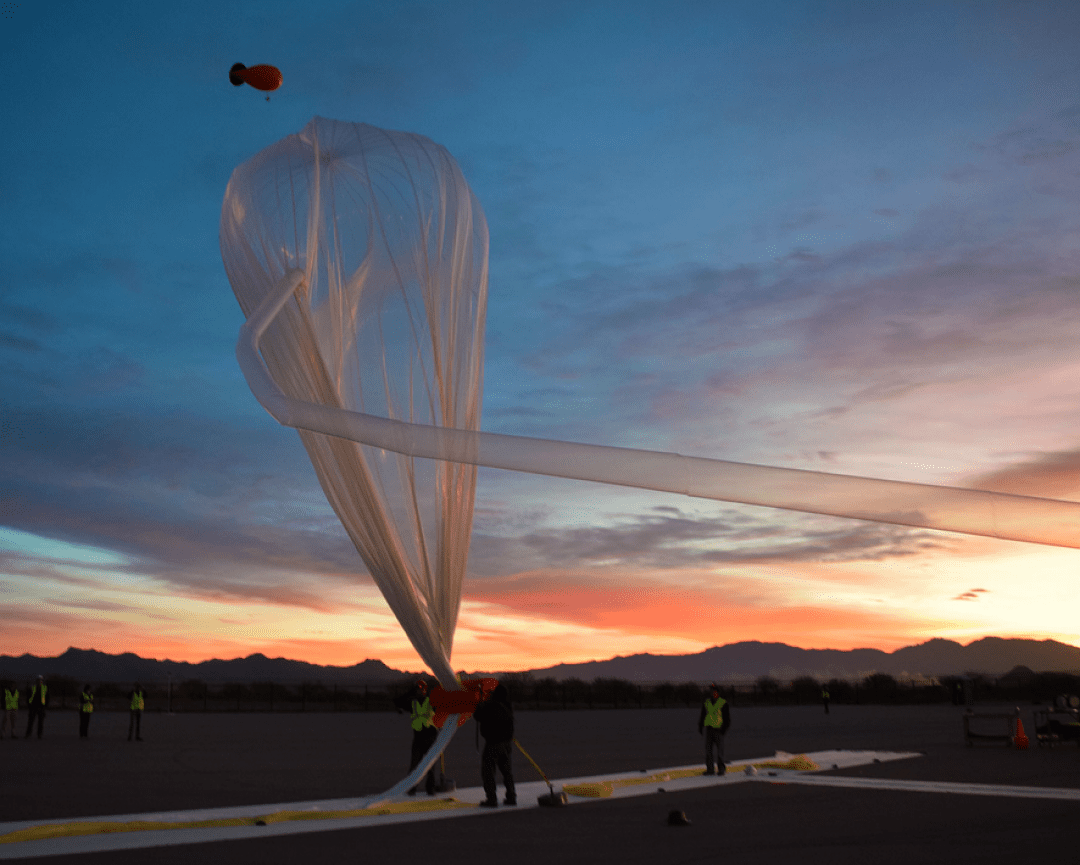Balloon carries two MSU experiments to edge of space
Saturday Feb. 21st, 2015

A balloon that traveled to the edge of space this week carried two Montana State University experiments.
One experiment -- launched Feb. 19 and retrieved Feb. 20 after reaching 102,200 feet -- tested a tracking and high-definition link that MSU hopes to use during a total solar eclipse on Aug. 21, 2017. The Montana Space Grant Consortium is organizing a national effort where college students across the United States will monitor the eclipse with high-altitude balloons.
The second experiment tested a computer system that’s designed to resist radiation in space. MSU recently received word that the tiny satellite it designed to carry the system was one of 14 CubeSats selected to fly on an upcoming NASA mission.
“It was just awesome,” Angela Des Jardins, director of the Montana Space Grant Consortium, said about the 7 a.m. balloon launch. “Our students were thrilled to be there and be part of it.”
MSU was one of two universities invited to send experiments on the balloon, an opportunity that arose from connections between MSU’s Dave Klumpar and World View, Des Jardins said. World View is the commercial balloon spaceflight company that launched the research flight from the Tucson, Ariz., area. Klumpar is director of MSU’s Space Science and Engineering Laboratory.
The other university that flew an experiment on the balloon was the University of North Florida. That experiment was designed to measure the ozone gas profile in the stratosphere.
The research and education payloads are part of World View’s commitment to opening routine access to high-altitude balloon flights, as well as its dedication to advancing science, technology, engineering and math (STEM) programs in schools, according to a Feb. 20 press release from World View. All three experiments involved multiple students over multiple years.
Randy Larimer, deputy director of the Montana Space Grant Consortium, said more than 40 graduate students and undergraduate students over eight years were involved in designing the computer system. They are led by MSU faculty member Brock LaMeres in the College of Engineering. Besides flying on an upcoming satellite mission in 2016, the technology is scheduled to be tested on the International Space Station later this year.
More than 15 students at MSU and Iowa State University contributed to the design of the video link that flew on the World View balloon, Larimer added. The video link test verified that the technology setup works well.
Larimer and four MSU students went to Arizona for the balloon launch. The students were Sam Harkness, a graduate student in electrical engineering; Scott Miller, a senior in computer engineering; Tim Basta, a senior in mechanical engineering; and Trevor Clark, a senior in electrical engineering.
To learn more about the balloon flight and MSU’s Balloon Outreach, Research, Exploration and Landscape Imaging System (BOREALIS), go to http://spacegrant.montana.edu/BOREALIS.html
| Tweet |